INDIAN ARMED FORCES CHIEFS ON OUR RELENTLESS AND FOCUSED PUBLISHING EFFORTS

The insightful articles, inspiring narrations and analytical perspectives presented by the Editorial Team, establish an alluring connect with the reader. My compliments and best wishes to SP Guide Publications.

"Over the past 60 years, the growth of SP Guide Publications has mirrored the rising stature of Indian Navy. Its well-researched and informative magazines on Defence and Aerospace sector have served to shape an educated opinion of our military personnel, policy makers and the public alike. I wish SP's Publication team continued success, fair winds and following seas in all future endeavour!"

Since, its inception in 1964, SP Guide Publications has consistently demonstrated commitment to high-quality journalism in the aerospace and defence sectors, earning a well-deserved reputation as Asia's largest media house in this domain. I wish SP Guide Publications continued success in its pursuit of excellence.
- Operation Sindoor: Resolute yet Restrained
- India’s Operation Sindoor Sends a Clear Message to Terror and the World – ‘ZERO TOLERANCE’
- Japan and India set forth a defence cooperation consultancy framework, talks on tank and jet engines
- Terrorist Attack in Pahalgam in Kashmir: Unfolding a long surgical war against PAK
- Lt General Pratik Sharma takes over Command of Indian Army's Northern Command
Boosting Naval Power
The Indian Navy hopes to raise its warships strength from the current 140 to 175 by 2027 which may look ambitious but give the government focus should be feasible
 |
The Author is Former Director General of Information Systems and A Special Forces Veteran, Indian Army |
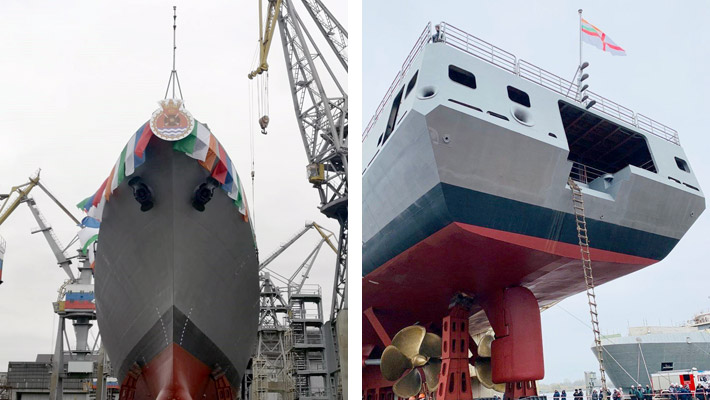
In October 2016, the Indian and Russian governments had signed an agreement to construct four additional P1135.6 class frigates; two each in Russia and India. As a follow up to this agreement, the seventh frigate of this class for the Indian Navy was launched at Yantar Shipyard in Russia's Kaliningrad on October 28, 2021. The ship was formally named INS ‘Tushil’ during the launch ceremony; Tushildenoting “protector shield” in Sanskrit. The P1135.6 class frigates feature stealth technology in terms of low radar and under water noise signatures. Delivery of the two frigates being built in Russia is expected by 2023.
The Indian Navy issued a statement saying,"The ships with a potent combination of state-of-art Indian and Russian weapons and sensors are equipped to operate in Littoral and Blue waters, both as a single unit and as consort in a naval task force. They feature stealth technology in terms of low radar and underwater noise signatures.”
The Ministry of Defence statement read, “These ships are being equipped with major Indian-supplied equipment such as surface to surface missiles, sonar system, surface surveillance radar, communication suite and anti-submarine warfare system, along with Russian surface to air missiles and gun mounts."The construction of these frigates is based on the Indian Navy's specific requirements to meet the entire spectrum of naval warfare in all three dimensions of air, surface and sub-surface.
Indian Navy Is monitoring the Chinese naval and maritime assets deployed in the Indian Ocean Region (IOR) for any activities inimical to our interests
Speaking to the media on November 10 on sidelines of the third edition of the Goa Maritime Conclave – GMC 2021, Chief of the Naval Staff Admiral Karambir Singh said that the Indian Navy was monitoring the Chinese naval and maritime assets deployed in the Indian Ocean Region (IOR) for any activities inimical to our interests. The GMC has grown as a platform in the backdrop of developments in the region. The platform would obviously address issues across the maritime domain including increasing cooperation in the IOR to tackle non-traditional threats, enhancing information exchange and capacity building, as well as reviewing China’s growing presence in the IOR.
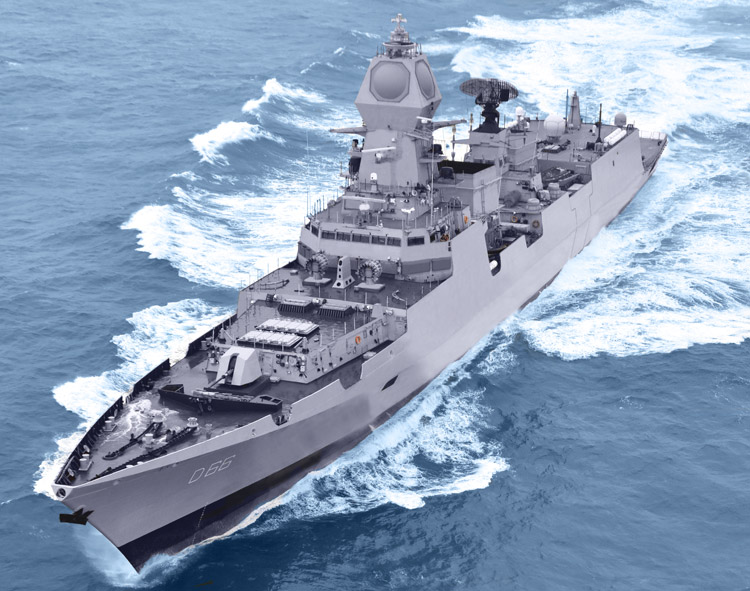
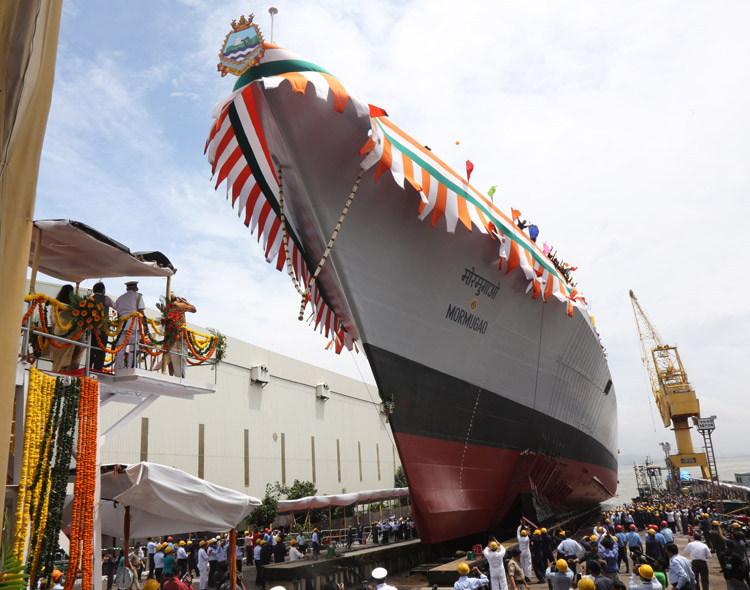
On October 30, 2021, a new 7,400-ton guided missile stealth destroyer constructed at Mazagon Docks was delivered to the Indian Navy after a delay of well over three years. This is first of the four destroyers in this class to be built for the Navy under a contract signed in January 2011. The destroyer is slated to be named INS ‘Visakhapatnam’ on commissioning in the second half of November this year. The other three destroyers, ‘Mormugao’, ‘Imphal’ and ‘Surat’ are to follow over the next few years. The combined cost of the four destroyers sporting an array of weapons and sensors including BrahMos supersonic cruise missiles and Israeli new-generation Barak surface-to-air missile systems is estimated to be over Rs 35,000 crore.
China has delivered to Pakistan the largest and most advanced warship that Beijing has ever exported
On November 9, the Indian Navy took delivery of the fourth `Scorpene' class submarine under Project-75 from Mazagon Dock Shipbuilders Limited (MDL). With this delivery India joined the exclusive group of submarine building nations. MDL has already delivered three submarines of Scorpene-class to the Navy, namely: Kalvari, Khanderi, and Karanj. The fourth one now delivered will be later commissioned in the Indian Navy as INS’ Vela’. Yard 11878, christened 'Vela', was launched in May 2019. The fifth submarine to be christained INS ‘Vagir’, which was launched in November 2020 has already commenced her harbour trials month is expected to go for maiden surface trials next month.The sixth submarine under Project 75 is in the advanced stage of outfitting.
Significantly, Chinese media reported on November 8, 2021, that China has delivered to Pakistan the largest and most advanced warship that Beijing has ever exported. Designed and built by China State Shipbuilding Corporation Limited (CSSC), the frigate was delivered to the Pakistan Navy in a commissioning ceremony in Shanghai. The Type 054A/P frigate named PNS ‘Tughril’ is reportedly the first of the four frigates of this class being constructed by China for the Pakistan Navy.
Numerically, China has the largest navy in the world today leaving the US behind. China is looking at building around six aircraft carriers but may eventually land up building more nuclear-powered aircraft carriers like the US.
The Type 054A/P frigate is a technologically advanced and capable platform with enormous surface-to-surface, surface-to-air and underwater firepower, besides extensive surveillance potentials. It is equipped with state-of-the-art combat management and an electronic warfare system along with modern self-defence capabilities. According to a statement issued by Pakistan, the Type 054A/P frigate PNS ‘Tughril’ can simultaneously execute a number of naval warfare missions in a highly intense multi-threat environment.
It is evident that Beijing is boosting the Pakistani Navy to assist Chinese consolidation in the Indian Ocean Region (IOR) and assist the PLA Navy (PLAN) in case of operations. China’s aim also is to pose a beefed up dual threat to India in conjunction with Pakistan. China and Pakistan have also been partnering at the asymmetric and sub-conventional level. While China appears preparing for limited war, it has helped Pakistan in upping its proxy war on India, particularly in Jammu and Kashmir. As in Afghanistan, Pakistan is using its proxies mixed with regulars against India. It can similarly augment the naval wing of Jamaat ud-Dawa (JuD) for sabotage and terror attacks against India.
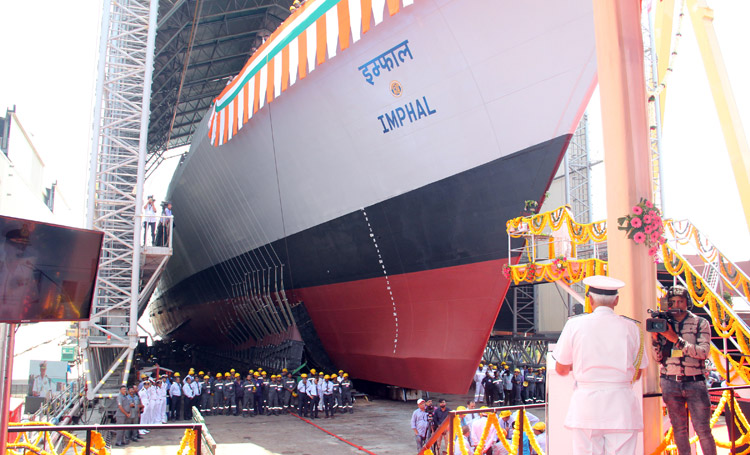
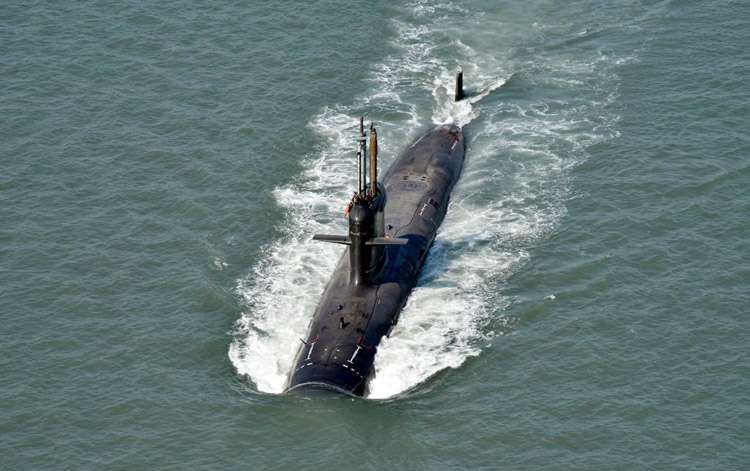
China presently has two operational aircraft carriers Liaoning and Shandong, and is fast building two more with CATOBAR (catapult assisted take-off but arrested recovery) configuration to launch fighters as well as heavier aircraft for surveillance, early-warning and electronic warfare from its deck, like the US Navy.Numerically, China has the largest navy in the world today leaving the US behind albeit the US Navy has 11 x super 1,00,000-ton nuclear-powered carriers, each of which carries 80-90 fighters and aircraft. Given the desire of world domination of Chinese President Xi Jinping, China is looking at building around six aircraft carriers but may eventually land up building more nuclear-powered aircraft carriers like the US.
India presently has the aircraft carrier INS ‘Vikramaditya’ – a 44,500-tonne carrier inducted from Russia in November 2013, to which 45 x MiG-29Ks were added to operate from its deck. The second round of sea trials of the country’s first 40,000-tonne indigenous aircraft carrier (IAC) have been held and INS ‘Vikrant’ is slated for delivery to the Navy by April 2022, followed by commissioning in August 2022. However, the IACwill become fully operational only after the flight trials of MiG-29K supersonic fighter jets and MH-60R multi-role helicopters are completed from its deck by around mid-2023. INS ‘Vikramaditya’ and the IAC have angled ski-jumps for fighters to take off under their own power in STOBAR (short take-off but arrested recovery) operations.
The Indian Navy hopes to raise its warships strength from the current 140 to 175 by 2027 which may look ambitious but give the government focus should be feasible. But due to budgetary constraints coupled with inhibitions of policy makers about the vulnerability of aircraft carriers in future warfare, the initial acceptance of necessity (AoN) for the third aircraft carrier (IAC-II) is still pending since May 2015.With two aircraft carriers, the Navy could land up with one operational carrier at the critical juncture in case the second carrier is under repair and refit.





